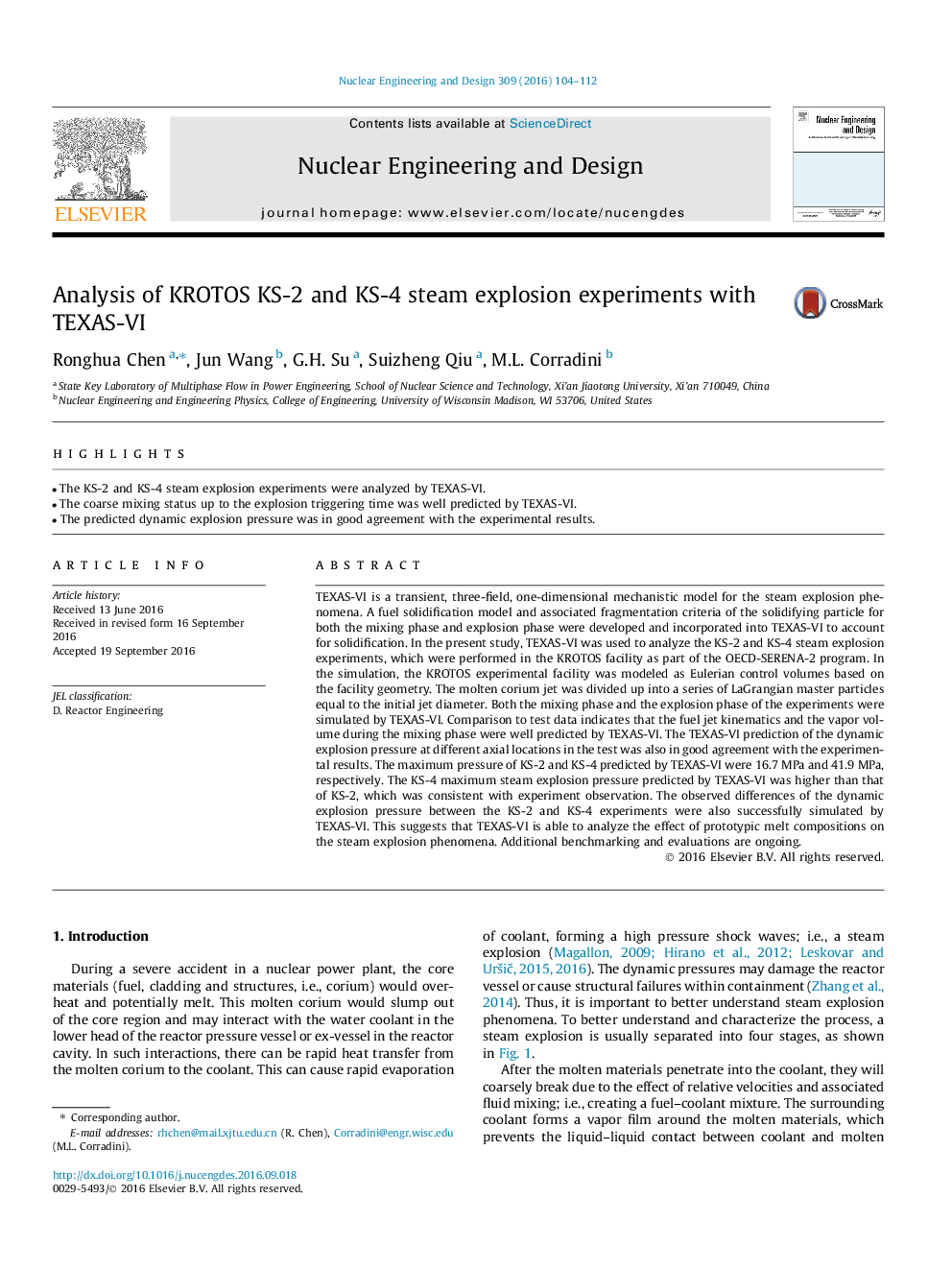| Article ID | Journal | Published Year | Pages | File Type |
|---|---|---|---|---|
| 4925856 | Nuclear Engineering and Design | 2016 | 9 Pages |
Abstract
TEXAS-VI is a transient, three-field, one-dimensional mechanistic model for the steam explosion phenomena. A fuel solidification model and associated fragmentation criteria of the solidifying particle for both the mixing phase and explosion phase were developed and incorporated into TEXAS-VI to account for solidification. In the present study, TEXAS-VI was used to analyze the KS-2 and KS-4 steam explosion experiments, which were performed in the KROTOS facility as part of the OECD-SERENA-2 program. In the simulation, the KROTOS experimental facility was modeled as Eulerian control volumes based on the facility geometry. The molten corium jet was divided up into a series of LaGrangian master particles equal to the initial jet diameter. Both the mixing phase and the explosion phase of the experiments were simulated by TEXAS-VI. Comparison to test data indicates that the fuel jet kinematics and the vapor volume during the mixing phase were well predicted by TEXAS-VI. The TEXAS-VI prediction of the dynamic explosion pressure at different axial locations in the test was also in good agreement with the experimental results. The maximum pressure of KS-2 and KS-4 predicted by TEXAS-VI were 16.7Â MPa and 41.9Â MPa, respectively. The KS-4 maximum steam explosion pressure predicted by TEXAS-VI was higher than that of KS-2, which was consistent with experiment observation. The observed differences of the dynamic explosion pressure between the KS-2 and KS-4 experiments were also successfully simulated by TEXAS-VI. This suggests that TEXAS-VI is able to analyze the effect of prototypic melt compositions on the steam explosion phenomena. Additional benchmarking and evaluations are ongoing.
Related Topics
Physical Sciences and Engineering
Energy
Energy Engineering and Power Technology
Authors
Ronghua Chen, Jun Wang, G.H. Su, Suizheng Qiu, M.L. Corradini,
